МЫ – ТАТАРЫ
Сабирова Альфия Ильясовна, учитель английского языка, I квалификационной категории, МБОУ – Арской гимназии №5, г. АрскаAims: to build on students’ cultural knowledge about Tatars &nbs...
Сабирова Альфия Ильясовна, учитель английского языка, I квалификационной категории, МБОУ – Арской гимназии №5, г. Арска
Aims: to build on students’ cultural knowledge about Tatars
Learning objectives:
Оформление: Видеофильм «Милли киемнәр», плакаты с национальными костюмами татар, татарские вышитые полотенца, национальное платье с “изү”, ученики в национальных костюмах, татарские национальные блюда.
План:
Ход урока:
Teacher: Good morning, dear pupils. I am glad to see you. I expect our lesson to be very interesting and exciting today, because we are going to talk about our dearest and the most favorite place on the Earth. Can you guess what place it is?
P: I suppose we are going to talk about Tatarstan.
T: Right you are. Read the name of our lesson, please.
P: The name of our lesson is «We are tatars».
T: Today's lesson is dedicated to the masterpieces of the spiritual heritage of the Tatar people who have been accumulated for centuries. (The teacher draws attention of students to the image of a village house). See how beautiful country houses look.
Since time immemorial, the Tatars decorated their dwelling and gates with bizarre ornaments. Lacy white curtains, decorated with flowers, canopies, embroidered towels and tablecloths delight the eye. Without these household items it is impossible to imagine the house of our ancestors.
There would be no home comfort in the living room without the main "master of the house" – a chest. Let's open the treasured grandmother's trunk and enjoy his wealth, which was passed on from generation to generation. We will come into contact not only with history, but also with the national culture of the Tatar people. I invite you to look through the magazine "Chest of grandma". «Granny's chest»
(The teacher of the Tatar language tells about customs of «Аулак өй»).
But here in “aulak house” they had an opportunity not only to work but to sing, to dance and even to eat tasty things. The most interesting thing was when boys came and as soon as they came the joy began…
Шәл бәйләдем, шәл бәйләдем,
Шәл бәйләдем, шәл бәйләдем,
Шәлем түгәрәк түгел лә
Шәлем түгәрәк түгел
Әннә - гидер, геннә - гидер генәем лә
Әннә - гидер, геннә - гидер генәем
Очып барып күрер идем,
Очып барып күрер идем,
Җаным күбәләк түгел лә
Җаным күбәләк түгел
Әннә - гидер, геннә - гидер генәем лә
Әннә - гидер, геннә - гидер генәем
Girls:
– It’s good when parents are away, we can chat a lot and do our work.
– Yes and what are you doing?
– I’m knitting a shall.
– I’m knitting socks.
– I like to embroider a towel.
– You know, girls. Yesterday, on the attic I found my grandmother’s chest. But when my parents were at home, I was afraid to open it. Let’s open it together.
(Девочки одевают по - одному шаль и озвучивают кассету)
P1: The most distinguished ornamental and decorative elements have been forming during many decades according the peculiarities of the climate, the historical development of the Tatar economic and domestic life, religion and world outlook.
P2: Among female population wide over clothes, long sleeveless jackets and
dresses with izyu ruffles were widely spread. At the turn of the 19th & 20th centuries dress was with a joke, with laps going from the middle of the breast and back parts of the dress, gathered and falling down with fold. Flounce, horizontal folds or narrow stripes of fabric were sewn on to the dress. Preference was given to silk with texture or floral – foliate pattern in delicate color scheme of pink, lilac, green and light blue colors. The same color scheme was used for silk and velvet maidens’ apron.
P3: The decorative art of the Kazan Tatar is represented by a wide spectrum of
works made by unknown craftswomen. It gives an insight into the artistic genius of the people, their creative and spiritual potentials.
The work of Tatar craftsmen brings the historical development of such arts as patterned weaving, carpet making, chain and gold embroidery, stone curving, inlay work in leather, jewelers, pottery and calligraphy into view.
P4: The Tatars’ creativity in the field of decorative art is originated from their natural surroundings and their practical activities. The Tatars are familiar with the main forms of decorative applied art – from monumental architecture and interior decoration to elaborate national costumes and colorful decorations for popular rites and festivities.
P5: Even in ancient times the textile head covering was the part and parcel of married woman’s headdress. This tradition originated as a result of ancient heathen view on the magic of hair, which further was developed by Islam. This religion recommends to hide the body lines and cover your face. Prior to the universal headscarf of the 19th century, the head coverings have advanced the long path of evaluation and diversification.
Being brighter in color, head outer coverings served as street headdress.
P6: Women’s jewelers of that time were indicative of prosperity and social position of a family. As a rule, the jewelers were made of silver with precious or semi-precious stones. As they were believed that the stones have magic power, brown carnelians and bluish green turquoise were preferred. Hiliac amethysts, smoky topazed and rock – crystals were also used rather widely. Women of well-to-do families had complete set of traditional jewelers – finder rings & simple rings, to wear which was an all – Muslim tradition; various bracelets; yaka chylbyry collar fastening grown up to huge size, hair ornaments (chulpa); shoulder – belts (khasite) – a synthesis of amulet and decoration.
P7: Young women and maidens wore soft kalfaks – national headdresses that had sufficient volume to cover hair and the back of the neck. In the villages they were knitted with thin cotton yarn, women from towns (urban women) used imported thin knitted fabric or velvet & made them into real artwork. Bright appliqués of variegated ribbons throughout the surface, work in fluffed chenille threads together with beads, pearls, metal threads on striped background made kalfak headdress – the central decorative component of the costume.
– It has impressed me greatly. If I had so nice things I would be the most beautiful girl in our village.
– Best of all I liked hasite, do you remember that wonderful thing that was put on a shoulder.
– And I want to have these nice earrings; I think I’ll never forget them.
– Girls! Stop that nonsense. What is good in these ancient things? Let’s speak about boys. Have you heard about 2 boys from the town?
– Yes! Yes! I saw them. They are so interesting: jeans and trainers and hair! Unbelievable!
– What! What about hair?
– It’s green and sticks up in the middle and spiky round the edge!
– No! Our boys are better. They wear tyubeteykas and sleeveless jackets and loose shirts.
– Of course, village boys are hardworking and always clean and neat in the appearance.
– And polite and shy…
– And those two boys! They are…
The boys are playing the garmoshka & singing the song “Эх сез, матур кызлар”.
Дус ишләрем уйный-көлә,
Мин генә көлмим.
Уенның да ямен тапмыйм,
Ни булды, белмим.
Эх, сез матур кызлар!
Ник шаяртасыз?
Йөрәгемнең януларын аңламыйсыз.
The girls are looking through the window and some are looking at the mirror.
– Girls. The boys are coming.
– Let them come in.
– No, Mummy didn’t allow me.
– Let them come in.
Boys: – Girls! May we join you? We have presents for you.
– Girls! You are so charming. You are very beautiful.
– Your eyelashes are so long & black.
– You are so nice and kind.
– Your hair is as black as night.
– You are so slim (skinny and fat) and slender.
– You are very smart and witty.
– You are generous and cheerful.
– You are hard-working (some are very lazy and stupid).
– We know you are kind. We can’t stay here any more!!! We are cold.
– Come in clever and handsome boys.
(Каждый дарит девушке подарок, пара проходит круг и садится на скамейку)
Boys: Let’s play (with a ring)
(Music)
– Who has a ring? Jump out!
– Pay! Sing! Recite a poem!
One girl:
– May I dance? (Татарский танец)
Girls: Let’s check up how clever you are! Explain our words. What is it?
Girls: You are not so stupid as we thought
Boys: And we have some riddles for you! Guess! Last Sabantuy we met 3 people. We’ll describe them. Try to guess who they are!
Boys are describing them. Girls try to guess.
Boys: – You girls are not as bad as we thought too.
– We are so tired to think. Let’s dance. (Танец “Ручеек”)
– Let’s sing our favorite song
Native language (все встают и поют)
Oh, my language, native language
You’re my soul and you’re my heart!
Many things I’ve learnt in this life
Through this language, through my blood.
Little baby in his cradle
Tries to hold his Mummy tight
I remember how my Granny
Told me fairy tales at night.
И туган тел, и матур тел
Әткәм, әнкәмнең теле
Дөньяда күп нәрсә белдем
Син туган тел аркылы
Oh, my language. For the first time
In my life I prayed the God:
“Bless my Mother, bless my Father,
Bless me, save me, oh, my Lord.”
The bells are ringing
Girls: – Oh! My parents are returning (All boys and girls are worried)
Boys: Boys! Girls! Let’s dash out! (They are running away)
Teacher: (Conclusion) It’s nice when Tatar people not only learn English but using English language they enrich their knowledge about their own nation, traditions and customs. Last year we got acquainted with one couple. They are Americans but they were studying Tatar language. We should be proud of the fact that we are Tatars and remember our history.
Aims: to build on students’ cultural knowledge about Tatars
Learning objectives:
- topractice previously taught vocabulary
- to develop talking about National costume of Tatars, their character and personality
- to organize and display the projects.
Оформление: Видеофильм «Милли киемнәр», плакаты с национальными костюмами татар, татарские вышитые полотенца, национальное платье с “изү”, ученики в национальных костюмах, татарские национальные блюда.
План:
- Приветствие. Вступительное слово учителя.
- Татарская народная песня «Шәл бәйләдем».
- Видео «Милли киемнәр». Комментирование.
- Комплименты мальчиков девочкам.
- Национальные танцы, песни, игры, загадки-испытания.
- Подведение итога. Заключительное слово учителя.
Ход урока:
- The beginning of the lesson. (Tatar music sounds)
Teacher: Good morning, dear pupils. I am glad to see you. I expect our lesson to be very interesting and exciting today, because we are going to talk about our dearest and the most favorite place on the Earth. Can you guess what place it is?
P: I suppose we are going to talk about Tatarstan.
T: Right you are. Read the name of our lesson, please.
P: The name of our lesson is «We are tatars».
T: Today's lesson is dedicated to the masterpieces of the spiritual heritage of the Tatar people who have been accumulated for centuries. (The teacher draws attention of students to the image of a village house). See how beautiful country houses look.
Since time immemorial, the Tatars decorated their dwelling and gates with bizarre ornaments. Lacy white curtains, decorated with flowers, canopies, embroidered towels and tablecloths delight the eye. Without these household items it is impossible to imagine the house of our ancestors.
There would be no home comfort in the living room without the main "master of the house" – a chest. Let's open the treasured grandmother's trunk and enjoy his wealth, which was passed on from generation to generation. We will come into contact not only with history, but also with the national culture of the Tatar people. I invite you to look through the magazine "Chest of grandma". «Granny's chest»
(The teacher of the Tatar language tells about customs of «Аулак өй»).
But here in “aulak house” they had an opportunity not only to work but to sing, to dance and even to eat tasty things. The most interesting thing was when boys came and as soon as they came the joy began…
- The girls are sitting and singing the Tatar song «Шәл бәйләдемhttps://muzofond.org/search/%D1%82%D0%B0%D1%82%D0%B0%D1%80%D1%81%D0%BA%D0%B0%D1%8F %D0%B0%D0%BB%D1%81%D1%83 %D1%84%D0%B5%D1%80%D0%B8%D0%B4%D0%B0»
Шәл бәйләдем, шәл бәйләдем,
Шәл бәйләдем, шәл бәйләдем,
Шәлем түгәрәк түгел лә
Шәлем түгәрәк түгел
Әннә - гидер, геннә - гидер генәем лә
Әннә - гидер, геннә - гидер генәем
Очып барып күрер идем,
Очып барып күрер идем,
Җаным күбәләк түгел лә
Җаным күбәләк түгел
Әннә - гидер, геннә - гидер генәем лә
Әннә - гидер, геннә - гидер генәем
Girls:
– It’s good when parents are away, we can chat a lot and do our work.
– Yes and what are you doing?
– I’m knitting a shall.
– I’m knitting socks.
– I like to embroider a towel.
– You know, girls. Yesterday, on the attic I found my grandmother’s chest. But when my parents were at home, I was afraid to open it. Let’s open it together.
- Video “Милли киемнәр”
(Девочки одевают по - одному шаль и озвучивают кассету)
- National woman’s dress, its history
- The colors of the dress & its fashion
- About craftsmen
- Ornamentation
- About the headdress
- Women’s jewelry
- Kalfaks
P1: The most distinguished ornamental and decorative elements have been forming during many decades according the peculiarities of the climate, the historical development of the Tatar economic and domestic life, religion and world outlook.
P2: Among female population wide over clothes, long sleeveless jackets and
dresses with izyu ruffles were widely spread. At the turn of the 19th & 20th centuries dress was with a joke, with laps going from the middle of the breast and back parts of the dress, gathered and falling down with fold. Flounce, horizontal folds or narrow stripes of fabric were sewn on to the dress. Preference was given to silk with texture or floral – foliate pattern in delicate color scheme of pink, lilac, green and light blue colors. The same color scheme was used for silk and velvet maidens’ apron.
P3: The decorative art of the Kazan Tatar is represented by a wide spectrum of
works made by unknown craftswomen. It gives an insight into the artistic genius of the people, their creative and spiritual potentials.
The work of Tatar craftsmen brings the historical development of such arts as patterned weaving, carpet making, chain and gold embroidery, stone curving, inlay work in leather, jewelers, pottery and calligraphy into view.
P4: The Tatars’ creativity in the field of decorative art is originated from their natural surroundings and their practical activities. The Tatars are familiar with the main forms of decorative applied art – from monumental architecture and interior decoration to elaborate national costumes and colorful decorations for popular rites and festivities.
P5: Even in ancient times the textile head covering was the part and parcel of married woman’s headdress. This tradition originated as a result of ancient heathen view on the magic of hair, which further was developed by Islam. This religion recommends to hide the body lines and cover your face. Prior to the universal headscarf of the 19th century, the head coverings have advanced the long path of evaluation and diversification.
Being brighter in color, head outer coverings served as street headdress.
P6: Women’s jewelers of that time were indicative of prosperity and social position of a family. As a rule, the jewelers were made of silver with precious or semi-precious stones. As they were believed that the stones have magic power, brown carnelians and bluish green turquoise were preferred. Hiliac amethysts, smoky topazed and rock – crystals were also used rather widely. Women of well-to-do families had complete set of traditional jewelers – finder rings & simple rings, to wear which was an all – Muslim tradition; various bracelets; yaka chylbyry collar fastening grown up to huge size, hair ornaments (chulpa); shoulder – belts (khasite) – a synthesis of amulet and decoration.
P7: Young women and maidens wore soft kalfaks – national headdresses that had sufficient volume to cover hair and the back of the neck. In the villages they were knitted with thin cotton yarn, women from towns (urban women) used imported thin knitted fabric or velvet & made them into real artwork. Bright appliqués of variegated ribbons throughout the surface, work in fluffed chenille threads together with beads, pearls, metal threads on striped background made kalfak headdress – the central decorative component of the costume.
- Girls are discussing the national costume:
– It has impressed me greatly. If I had so nice things I would be the most beautiful girl in our village.
– Best of all I liked hasite, do you remember that wonderful thing that was put on a shoulder.
– And I want to have these nice earrings; I think I’ll never forget them.
– Girls! Stop that nonsense. What is good in these ancient things? Let’s speak about boys. Have you heard about 2 boys from the town?
– Yes! Yes! I saw them. They are so interesting: jeans and trainers and hair! Unbelievable!
– What! What about hair?
– It’s green and sticks up in the middle and spiky round the edge!
– No! Our boys are better. They wear tyubeteykas and sleeveless jackets and loose shirts.
– Of course, village boys are hardworking and always clean and neat in the appearance.
– And polite and shy…
– And those two boys! They are…
The boys are playing the garmoshka & singing the song “Эх сез, матур кызлар”.
Дус ишләрем уйный-көлә,
Мин генә көлмим.
Уенның да ямен тапмыйм,
Ни булды, белмим.
Эх, сез матур кызлар!
Ник шаяртасыз?
Йөрәгемнең януларын аңламыйсыз.
The girls are looking through the window and some are looking at the mirror.
– Girls. The boys are coming.
– Let them come in.
– No, Mummy didn’t allow me.
– Let them come in.
Boys: – Girls! May we join you? We have presents for you.
– Girls! You are so charming. You are very beautiful.
– Your eyelashes are so long & black.
– You are so nice and kind.
– Your hair is as black as night.
– You are so slim (skinny and fat) and slender.
– You are very smart and witty.
– You are generous and cheerful.
– You are hard-working (some are very lazy and stupid).
– We know you are kind. We can’t stay here any more!!! We are cold.
- Girls: – Let’s they come in!
– Come in clever and handsome boys.
(Каждый дарит девушке подарок, пара проходит круг и садится на скамейку)
Boys: Let’s play (with a ring)
(Music)
– Who has a ring? Jump out!
– Pay! Sing! Recite a poem!
One girl:
– May I dance? (Татарский танец)
Girls: Let’s check up how clever you are! Explain our words. What is it?
- kalfak – a velvet woman’s headdress worked with gold thread
- ichigi – Tatar high boots of inlaid leather
- chulpa – a hair ornament with coins and semiprecious stones
- hasite – a shoulder belt richly ornamented with gold and semiprecious stones
- tyubeteyka – a velvet headdress worked with coloured silks
- izyu – chest ornament with different stones and coins.
Girls: You are not so stupid as we thought
Boys: And we have some riddles for you! Guess! Last Sabantuy we met 3 people. We’ll describe them. Try to guess who they are!
Boys are describing them. Girls try to guess.
Boys: – You girls are not as bad as we thought too.
– We are so tired to think. Let’s dance. (Танец “Ручеек”)
- – And we like to sing very much.
– Let’s sing our favorite song
Native language (все встают и поют)
Oh, my language, native language
You’re my soul and you’re my heart!
Many things I’ve learnt in this life
Through this language, through my blood.
Little baby in his cradle
Tries to hold his Mummy tight
I remember how my Granny
Told me fairy tales at night.
И туган тел, и матур тел
Әткәм, әнкәмнең теле
Дөньяда күп нәрсә белдем
Син туган тел аркылы
Oh, my language. For the first time
In my life I prayed the God:
“Bless my Mother, bless my Father,
Bless me, save me, oh, my Lord.”
The bells are ringing
Girls: – Oh! My parents are returning (All boys and girls are worried)
Boys: Boys! Girls! Let’s dash out! (They are running away)
Teacher: (Conclusion) It’s nice when Tatar people not only learn English but using English language they enrich their knowledge about their own nation, traditions and customs. Last year we got acquainted with one couple. They are Americans but they were studying Tatar language. We should be proud of the fact that we are Tatars and remember our history.




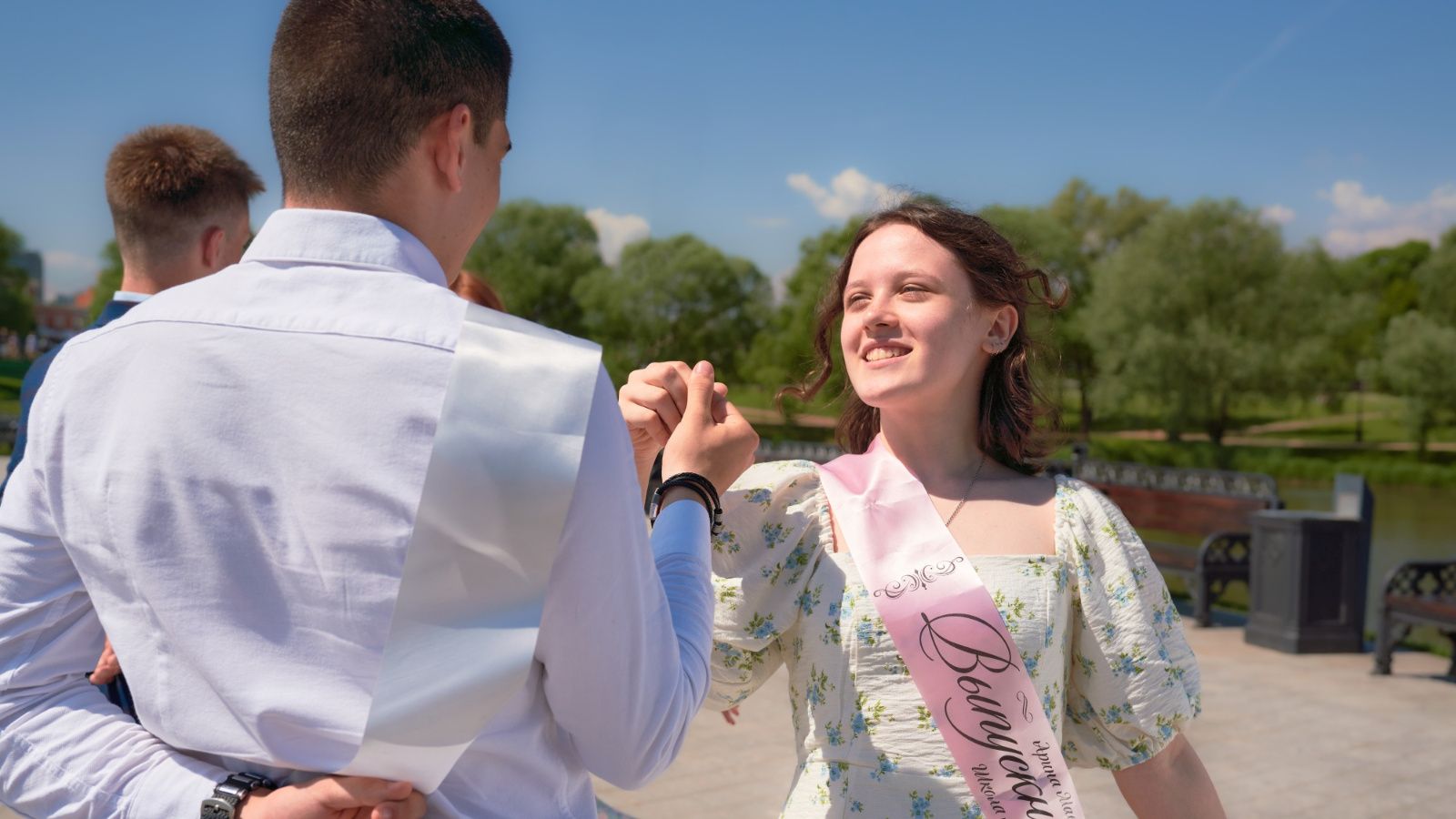
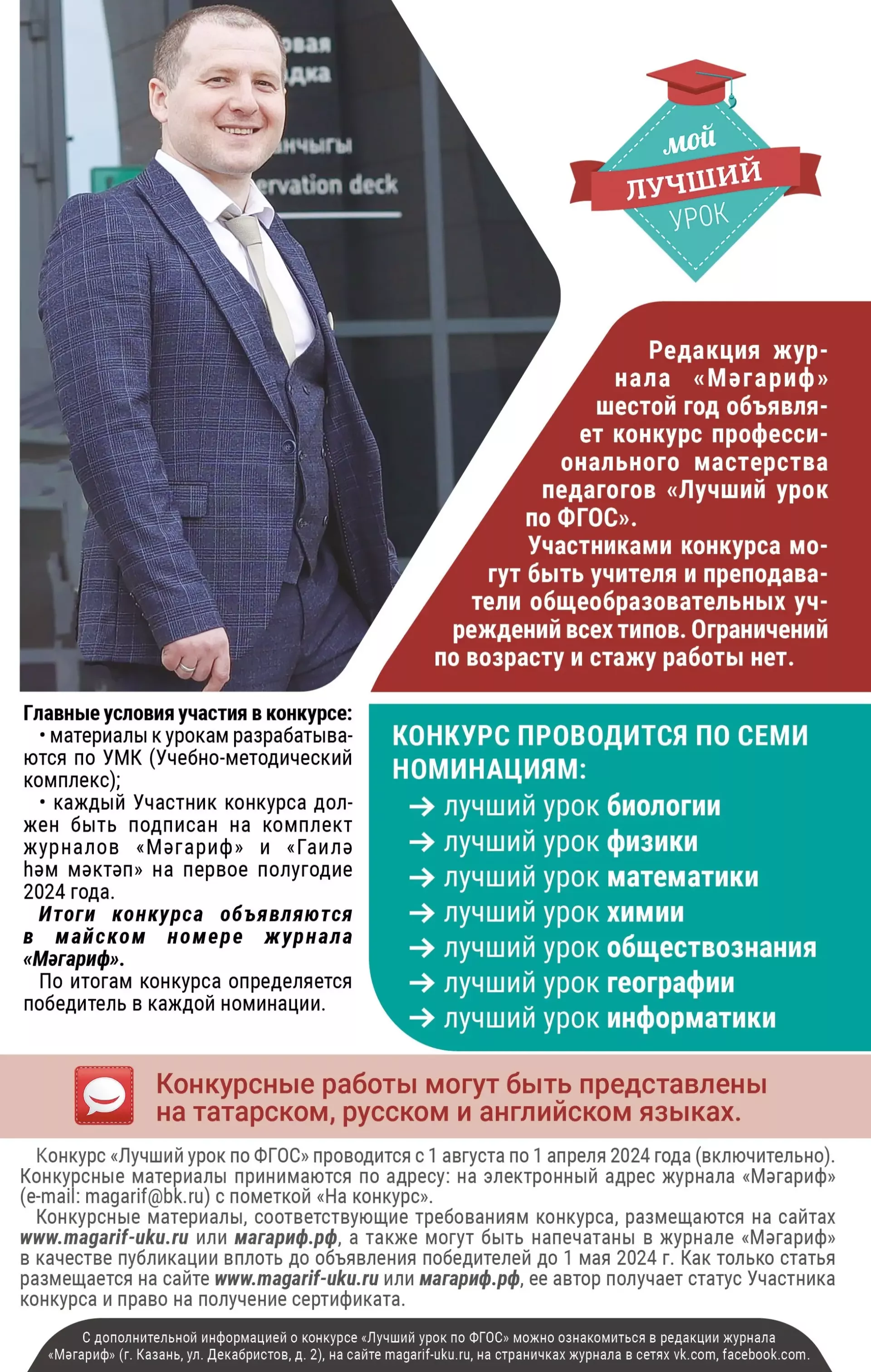
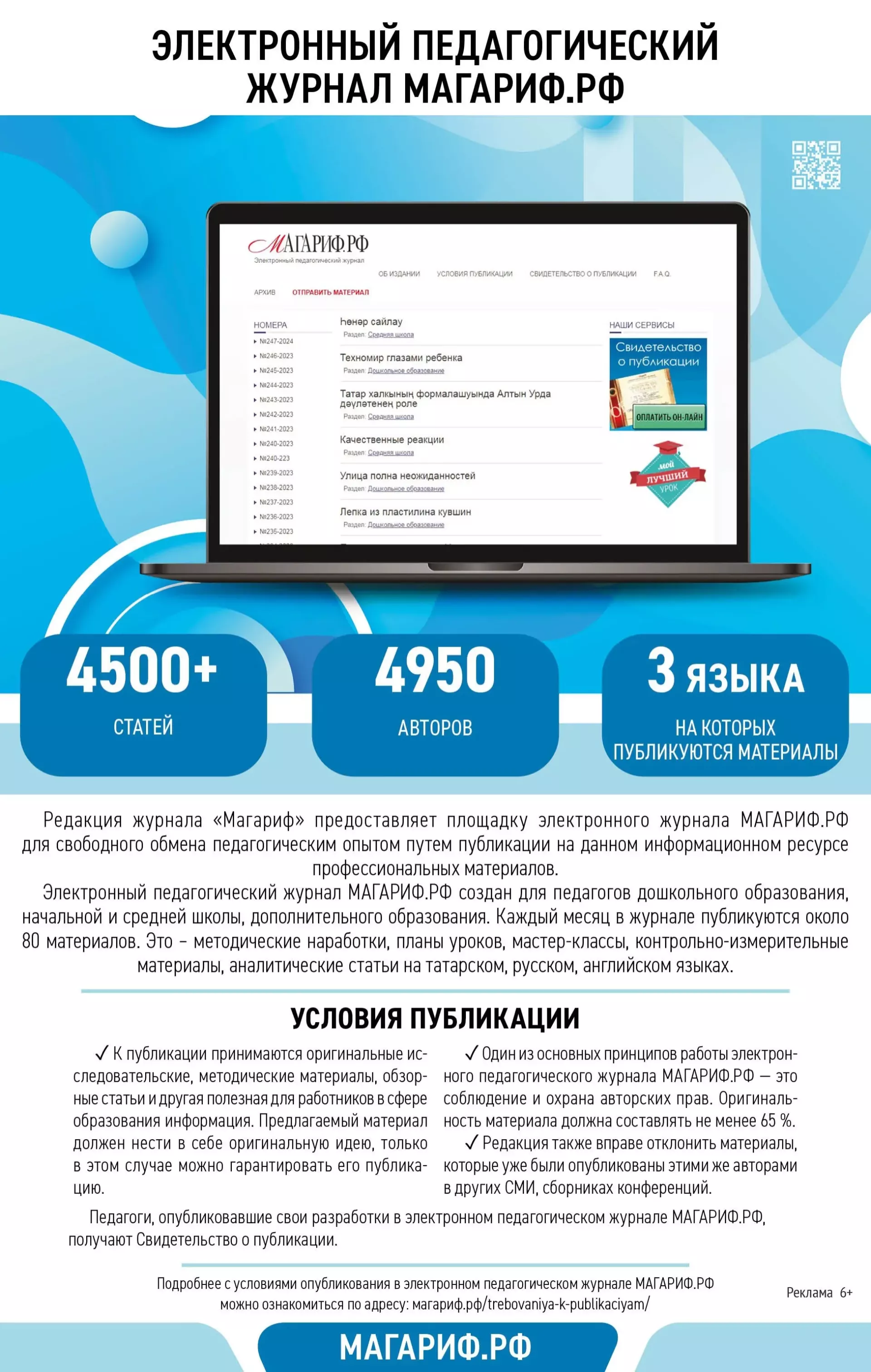
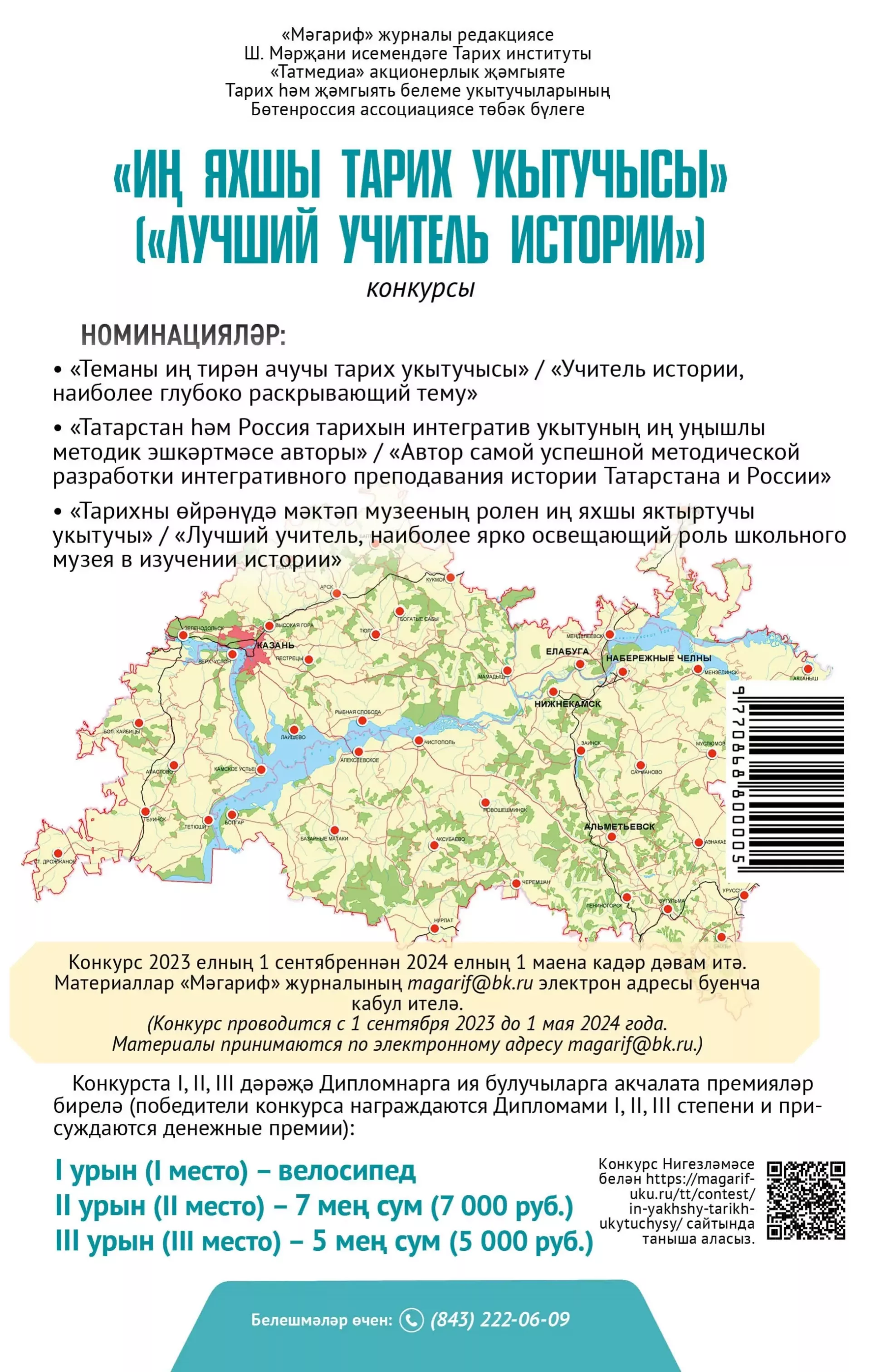

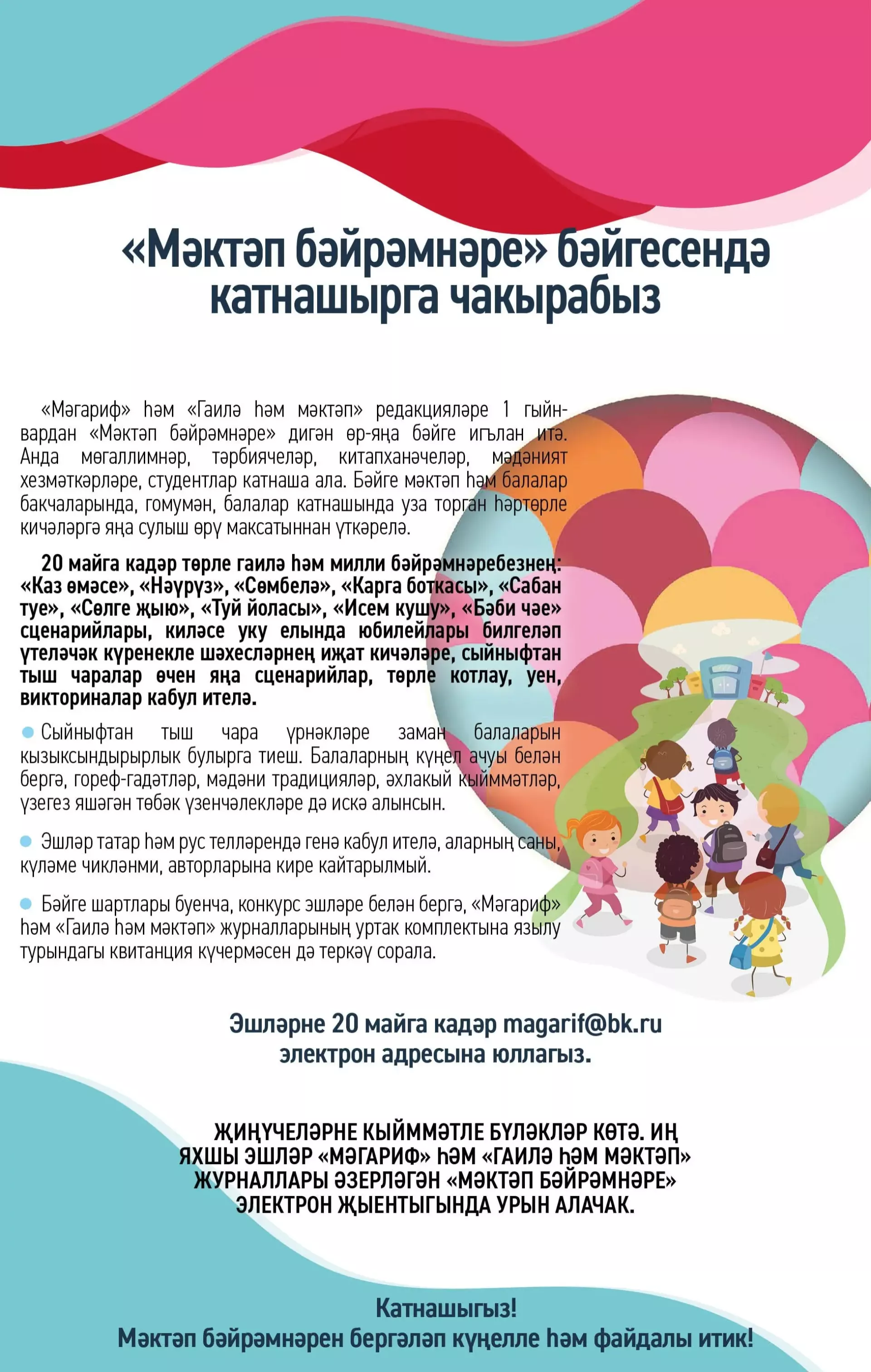
Комментарийлар